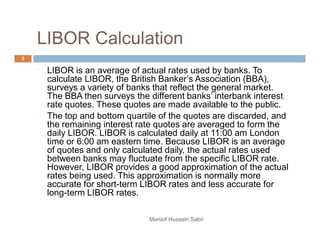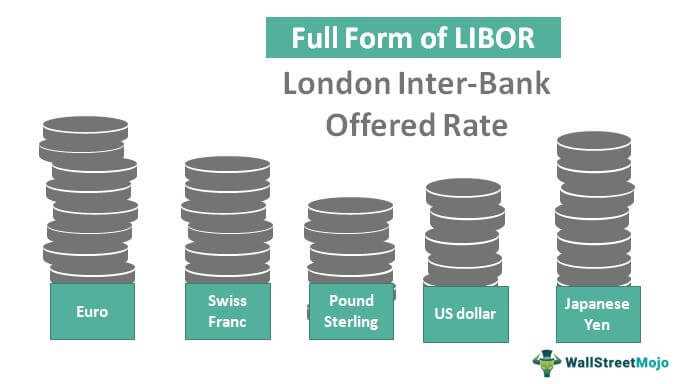What is LIBOR?
LIBOR, which stands for the London Interbank Offered Rate, is a benchmark interest rate that is used as a reference for a wide range of financial transactions. It is calculated based on the average interest rates at which major banks in London are willing to lend to each other in the interbank market.
LIBOR is published daily by the Intercontinental Exchange (ICE) and is widely used in various financial products, such as loans, derivatives, and bonds. It serves as a key indicator of the health of the global financial system and is used by banks, corporations, and investors around the world.
The Definition and Importance of the London Interbank Offered Rate
The London Interbank Offered Rate is a measure of the average interest rate at which major banks in London are willing to lend to each other. It is considered a key benchmark for short-term interest rates and is used as a reference rate for a wide range of financial transactions.
LIBOR is important because it provides a transparent and standardized benchmark for interest rates, allowing market participants to compare and evaluate the cost of borrowing across different currencies and maturities. It is widely used in the financial industry to price and value various financial products, such as loans, mortgages, and derivatives.
Furthermore, LIBOR is used as a reference rate for determining the interest rates on many adjustable-rate financial products, such as adjustable-rate mortgages and floating-rate bonds. Changes in LIBOR can have a significant impact on the cost of borrowing for individuals, businesses, and governments.
LIBOR Calculation
The calculation of LIBOR involves a panel of banks submitting their borrowing rates to the Intercontinental Exchange (ICE) on a daily basis. The rates are submitted for various currencies and maturities, ranging from overnight to 12 months.
The ICE then calculates the trimmed arithmetic mean of the submitted rates, excluding the highest and lowest rates, to determine the LIBOR for each currency and maturity. The resulting rates are published at 11:55 a.m. London time on the following business day.
It is important to note that LIBOR is not based on actual transactions, but rather on the rates at which banks are willing to lend to each other. This can introduce some level of subjectivity and potential for manipulation, as was seen in the LIBOR scandal in 2012.
Overall, the calculation of LIBOR is a complex process that involves input from multiple banks and is subject to rigorous oversight and regulation to ensure its integrity and accuracy.
The Definition and Importance of the London Interbank Offered Rate
The London Interbank Offered Rate (LIBOR) is a benchmark interest rate that is widely used in financial markets around the world. It is the average interest rate at which major banks in London are willing to lend to each other on an unsecured basis. LIBOR serves as a reference rate for a wide range of financial products, including loans, derivatives, and bonds.
Definition of LIBOR

LIBOR is calculated by taking the average interest rate submitted by a panel of major banks in London. These banks are selected based on their reputation and their involvement in the international money markets. The rates submitted by the banks are ranked, and the highest and lowest rates are excluded. The remaining rates are then averaged to determine the daily LIBOR rates for various currencies and maturities.
Importance of LIBOR
LIBOR plays a crucial role in the global financial system. It is used as a reference rate for pricing and valuing financial products, such as adjustable-rate mortgages, student loans, and credit cards. It also serves as a benchmark for determining the interest rates on corporate loans and bonds.
Furthermore, LIBOR is used in the calculation of the net asset value (NAV) of mutual funds and exchange-traded funds (ETFs). The NAV represents the value of the fund’s assets minus its liabilities, and it is calculated based on the market values of the securities held by the fund. Since many of these securities are linked to LIBOR, any changes in the LIBOR rates can have a significant impact on the NAV of these funds.
Moreover, LIBOR is closely monitored by central banks and regulators around the world. It serves as an indicator of the health of the banking system and the overall economy. Any significant changes in LIBOR rates can signal potential problems in the financial markets and may require intervention from central banks to maintain stability.
LIBOR Calculation
Here is a step-by-step breakdown of how LIBOR is calculated:
- Selection of panel banks: The British Bankers’ Association (BBA) selects a panel of major banks that are active in the London interbank market. These banks are responsible for submitting their borrowing rates.
- Rate submissions: Each panel bank submits its estimated borrowing rate for various currencies and tenors. The rates are submitted based on their perceived cost of borrowing from other banks.
- Trimming: The highest and lowest 25% of the submitted rates are removed, and the remaining rates are averaged to calculate the LIBOR rate. This trimming process helps to eliminate outliers and reduce the impact of any manipulation attempts.
- Weighted average calculation: The remaining rates are weighted based on the size of each bank’s balance sheet. Larger banks have a higher weight in the calculation, reflecting their greater influence in the interbank market.
- Publication: The calculated LIBOR rates are published on a daily basis by various financial information providers, such as Thomson Reuters and Bloomberg. These rates are widely used as benchmarks in financial transactions.
The LIBOR calculation methodology aims to provide an accurate representation of the borrowing costs for banks in the London interbank market. However, it is important to note that LIBOR is not based on actual transactions, but rather on estimated borrowing rates submitted by the panel banks.
Furthermore, the calculation process has undergone significant changes in recent years to enhance its reliability and transparency. These changes include the introduction of stricter reporting requirements and the oversight of the Intercontinental Exchange Benchmark Administration (ICE BA), which took over the administration of LIBOR from the BBA in 2014.
How LIBOR is Calculated and Its Impact on Financial Markets
The calculation of LIBOR involves a complex process that takes into account the interest rates at which major banks in London are willing to lend to each other. Each day, a panel of banks submits their borrowing rates for various currencies and maturities to the Intercontinental Exchange (ICE), which then calculates the LIBOR rates.
The calculation is based on a trimmed mean, which means that the highest and lowest rates are excluded, and the remaining rates are averaged. This helps to eliminate any outliers and provide a more accurate representation of the borrowing costs for banks.
The impact of LIBOR on financial markets is significant. As LIBOR is used as a benchmark for various financial products, including loans, derivatives, and mortgages, any changes in LIBOR rates can have a ripple effect throughout the financial system.
For example, if LIBOR rates increase, it becomes more expensive for banks to borrow money, which can lead to higher interest rates for consumers and businesses. This can dampen economic activity and potentially lead to a slowdown in the economy.
On the other hand, if LIBOR rates decrease, it becomes cheaper for banks to borrow money, which can lead to lower interest rates for consumers and businesses. This can stimulate economic activity and potentially lead to an expansion in the economy.
Furthermore, the manipulation of LIBOR rates by some banks in the past has raised concerns about the integrity and reliability of the benchmark. This has led to increased regulatory scrutiny and efforts to reform the calculation and governance of LIBOR.
Applications of LIBOR

LIBOR, the London Interbank Offered Rate, has a wide range of applications in the financial world. It is a benchmark interest rate that is used as a reference for various financial instruments and transactions. Here are some of the key applications of LIBOR:
1. Interest Rate Swaps:
2. Floating Rate Loans:
Many loans, especially in the corporate and commercial sectors, have floating interest rates tied to LIBOR. These loans have interest rates that are periodically reset based on the current LIBOR rate. Borrowers benefit from lower interest rates when LIBOR decreases and vice versa.
3. Adjustable Rate Mortgages:
Adjustable rate mortgages (ARMs) are home loans where the interest rate is variable and adjusts periodically. In many cases, the interest rate on ARMs is tied to LIBOR. As LIBOR fluctuates, the interest rate on the mortgage adjusts accordingly, impacting the monthly mortgage payments.
4. Derivatives Trading:
LIBOR is widely used in the trading of interest rate derivatives such as interest rate futures, options, and swaps. These financial instruments allow market participants to hedge against interest rate risks or speculate on future interest rate movements. LIBOR serves as a crucial reference rate for pricing and valuing these derivatives.
5. International Financing:
Many companies use LIBOR as a reference rate for financial reporting purposes. It is used to determine the interest expense or income associated with financial instruments such as bonds, loans, and derivatives. LIBOR’s widespread use ensures consistency and comparability in financial statements.

Emily Bibb simplifies finance through bestselling books and articles, bridging complex concepts for everyday understanding. Engaging audiences via social media, she shares insights for financial success. Active in seminars and philanthropy, Bibb aims to create a more financially informed society, driven by her passion for empowering others.
